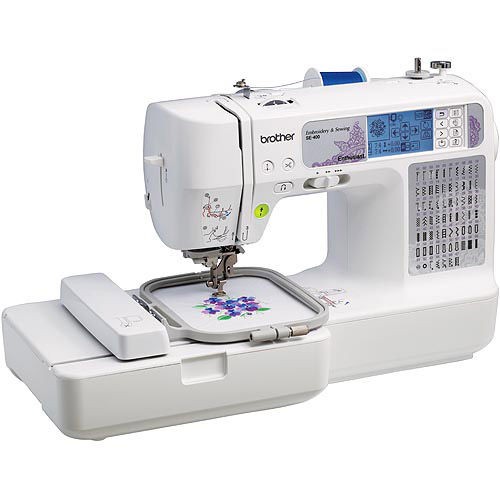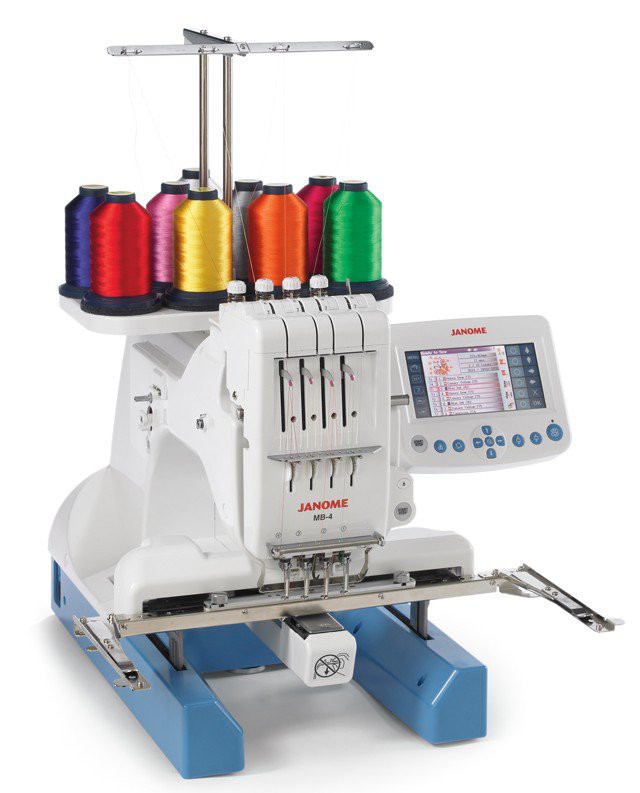Open Source Embroidery Machine
An easy to build embroidery machine, with open source design and software.
An easy to build embroidery machine, with open source design and software.
To make the experience fit your profile, pick a username and tell us what interests you.
We found and based on your interests.
Parts List TMFXII-C.pdfParts list of a fully functional Tajima Embroidery MachineAdobe Portable Document Format - 2.94 MB - 03/11/2017 at 21:12 |
|
|
Well we are starting to make some slow progress. We are currently working on sourcing parts for an off the shelf embroidery machine which we will combine with 3d printed parts to try and for a modular embroidery head. If you are only interested in a single needle design you can get the parts needed to build that. Or you can get several sets of parts and build a multi-needle design. It is slow going, but moving forward.
More to come soon.
Hello all, I am still looking for some people who would like to actively help with this project. I have since purchased a cheap brother embroidery machine and every time I use it I think about an open source option. I have the tool to fabricate parts and test, but I dont have the time to do the design work. Josh
Anyone interested in collaboration on this project. I dont have enough time to do it all myself. I have access to a lot of the equipment to make prototypes but not the time to test and work on the design.
I would like to assemble a team of people and start making steady progress on the design.
Let me know if your interested.
Josh
I have been doing some research to try and figure out the necessary parts. Their is a really good description on the SmoothieWare website with a lot of details.
The part that I am struggling with right now is to figure out the needle assembly and how to either build my own or finding a suitable replacement part that I can hack. Below is link that show the mechanism while the needle plunges.
I have been told that they call the needle assembly an Embroidery Foot. It seems like it should be reasonable to find a replacement foot for an embroidery machine. There are quite a few industrial companies out there so the trick would be to find one that will work for this project. So I am currently looking into finding a suitable source for these parts.
Also it seems like there are really two styles of embroidery machines. The home user one style and the commercial style. The main difference as far as I can tell is that the home user one is basically an upgraded sewing machine and can only ever do 1 color of thread at a time. I think if you were to try to build this style you could just get a cheap sewing machine and hack it together.

The commercial versions look a little different. I think this is the design that makes more sense to try and build as an open source design. It can support many more needles at the same time and if you could develop an open source design you could make it modular and scalable. You can start with a single needle and over time add more. So this is the design I am gonna work toward building.

I also learned a little bit about the software. Almost all embroidery machines accept the DST file format. So the software should be able to accept this format.
I also did some reading and the design should allow for a cap attachment, so you can embroider on round objects. Shouldnt be too hard If we keep that in mind from the beginning.
Random Links to Useful bits of information
http://www.alibaba.com/product-detail/Embroidery-Machine-head-parts_1411840432.html
http://www.alibaba.com/product-detail/Chinese-Embroidery-Machine-Parts_51047854.html
These two links have a lot of good details.
This is the beginning of the project. I am currently investigating the details and develop the specs of what this machine will need to do. I am not exactly sure how embroidery machines work beyond having seen one or two running. But I see this project as being split into 3 main areas.
Create an account to leave a comment. Already have an account? Log In.
Inventing a Wheel is not a good idea.For me first one needle and than we can go for industrial look.We done nothing from last 2 years.Very simple no body is serious about this.So if some body want to do this we can plan and stick to it.How can do the software job and mainly how will build Hardware.Trouble shooting when it comes.???
Hi,
This is complete industrial embroidery machine DIY project that someone did in Bolivia.
This could be helpful.
A person rennas done this in april 2015 on he is working with Khalid Khattak on http://www.cnczone.com/forums/cnc-wood-router-project-log/57404-software.html
Khalid made open source software the took *.dst tajima file and convert into G Code.software is available on cnczone.
Thanks for mentioning...
https://www.youtube.com/watch?v=5IKwKiq_b7w
tajima dst file, i think it good choice, this is decription for dst file
you should look here:
http://wiki.electrolab.fr/Projets:Lab:OpenEmbroiderer (en not fully translated)
http://wiki.electrolab.fr/Projets:Lab:brodeuse (fr the original)
Thanks for the comment. I like the idea of scrapping an old sewing machine to test with. But I would like to find a more sustainable solution. There is not much to taking a sewing machine and adding a XY table. But I want to design done more like an industrial embroidery machine. I would like to be able to add more than one needle down the road.
Why not print fabric dye onto the single thread with commercial techniques like dye sublimination as it goes along?
Actual hardware designing and manufacturing is much more of a headache than designing around something you can find in the garbage/off the shelf and add electronics to.
The fabric dye is a neat idea. I have seen people explore that with 3d printers. I think it is harder then it sounds though. Might be a cool tangent project though. As for why I don't want to just hack a old sewing machine, is because i am thinking more long term. I want to design an open source machine that any one can build. I can not rely on everyone being able to find the same kind of machine.
That being said, the electronics and software will be designed to be easy to use on any machine. similar to how the reprap electronics were for 3d printers. If someone does have access to a old sewing machine then they should be able to skip the mechanical design and just use the electronics and software.
More work for me, but better for the community I am hoping to build.
Reading your comment regarding the needle assembly, many commercially available embroidery-capable sewing machines are simply normal sewing machines with a stepper or servo motor replacing the regular motor. If you did that, you wouldn't have to start by building the part that needs to be very precise.
And sewing machines can be had for cheap. You can get a used one at a thrift store, or you can get a very cheap unit for about $100 new. Since an automated embroidery unit uses it's own XY motors to move the fabric hoop, it doesn't need the sewing machine's mechanism to move the fabric, which is the least accurate part of a cheap sewing machine.
Become a member to follow this project and never miss any updates
Can you share the program file? I want to test it for my sewing blog, you can see here https://sewinglogs.com/best-computerized-sewing-machines/